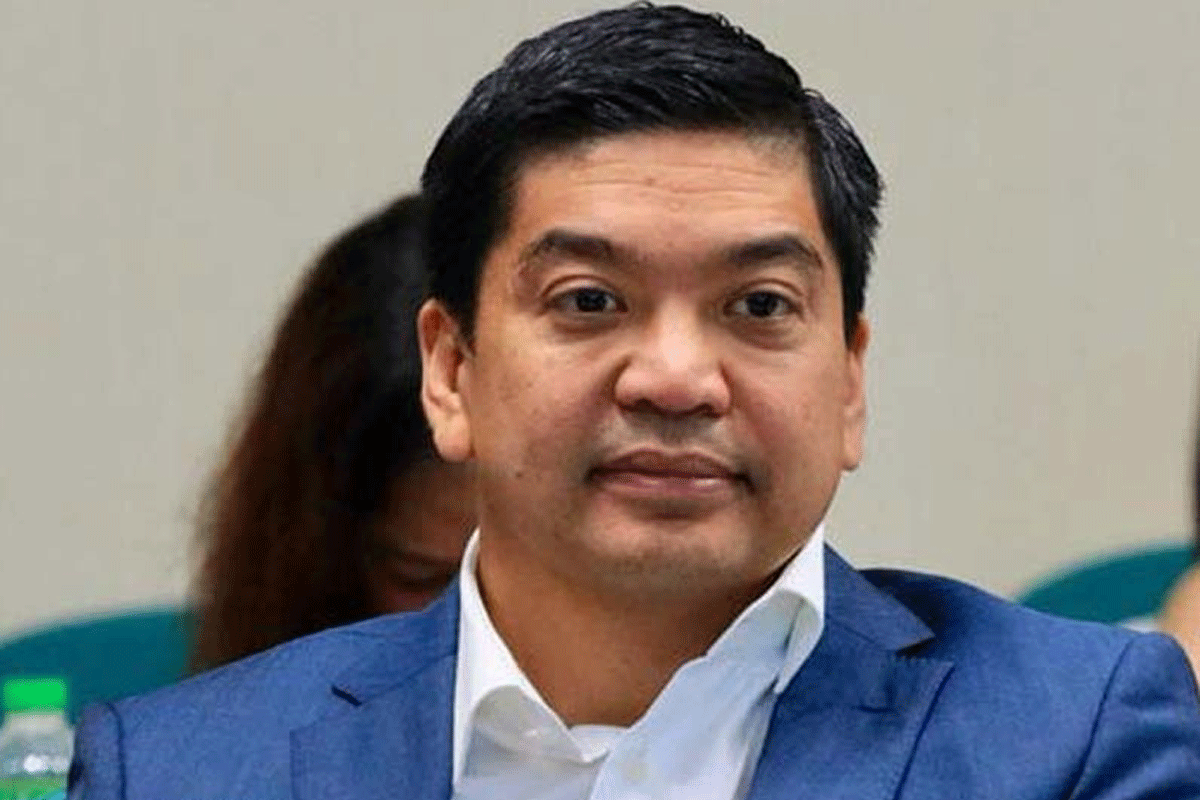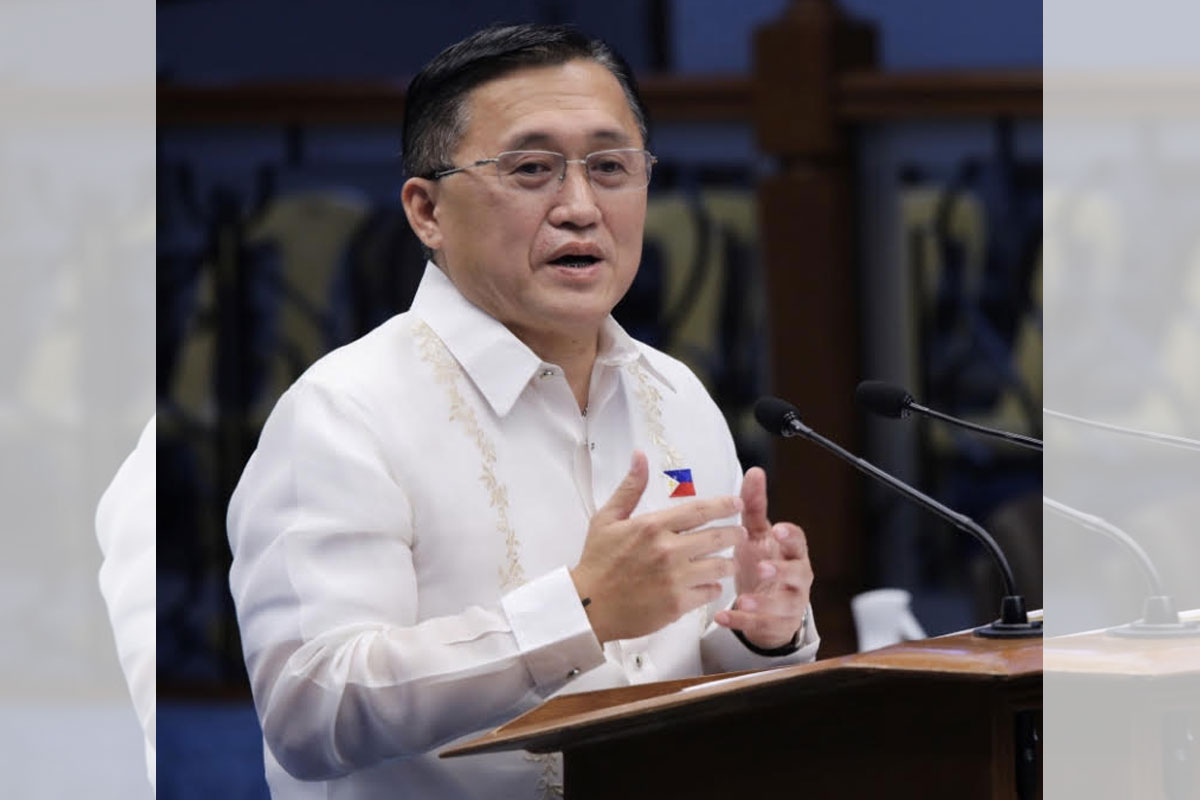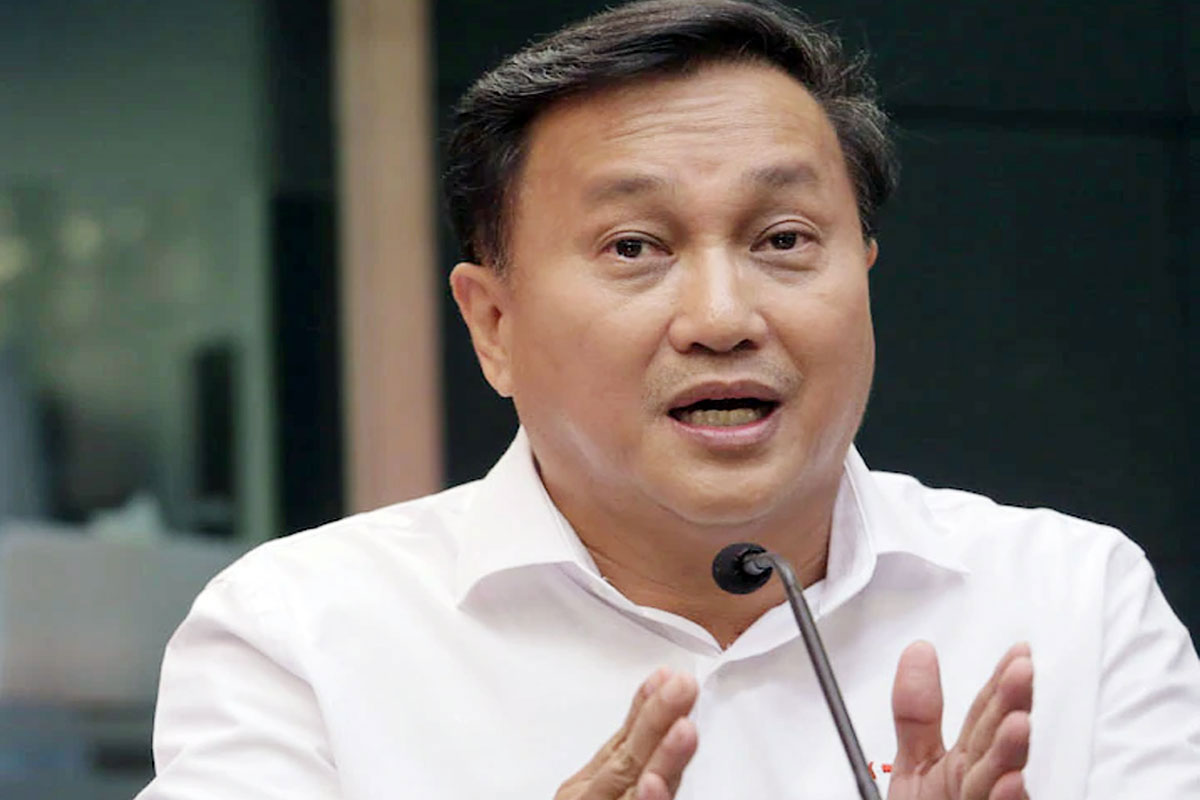
Regular joint patrols with allies in WPS seen
NEWLY confirmed Armed Forces of the Philippines (AFP) chief Lt. Gen. Romeo Brawner Jr. sees last month’s quadrilateral naval exercises of the Philippines with the United States (US), Australia and Japan in the South China Sea (SCS) as the runup to regular and continuous joint patrols of these countries, and possibly with other allies as well, in the face of China’s actions in the Indo-Pacific waters that flouted the United Nations Convention on the Law of the Sea (UNCLOS).
Asked by Commission on Appointments (CA) Majority Leader LRay Villafuerte during the recent CA hearing on his ad interim appointment as AFP chief on whether he favors joint sails with our country-allies to guard the WPS, Brawner replied: “We are very much in favor of having joint patrols and joint operations with our allies, partners and like-minded nations.”
“Kaya nga po ngayon … we already have the presence of US ships, Australian ships, and Japanese ships in our harbors and, lately, we have been having joint operations for instance with the Australian defense force and other nations as well,” Brawner said. “Ang principle po natin dito is that if we act alone we will not be able to deal with the challenges that we face in the South China Sea (SCS) and the West Philippine Sea (WPS). That is why we need to focus also on our alliances and our partnerships with other nations.”
And when Villafuerte, who represents CamSur’s second district in the House of Representatives, inquired whether our naval exercises with our three allies last month indicated that regular and continuous joint patrols are forthcoming, Brawner said: “Yes Mr. Chairman. We have several agreements with our partners and with our allies. For instance, with the United States we had the mutual defense treaty and we have mechanisms like the MDB (Mutual Defense Board) and the SEB (Security Engagement Board).”
“So lahat po ng activities natin na ginagawa with the US armed forces are mentioned in this mutual defense treaty and the mechanisms that are involved … We also have agreements with other countries like Australia and Japan at pinapalakas na rin po natin itong mga agreements natin with them, including the possibility of having agreements with other countries other than the countries I mentioned Mr. Chairman,” Brawner added.
In light of China’s increasing incursive maneuvers in the WPS, Villafuerte told Brawner at the CA hearing that he had long pushed joint sails with our allies, expressing the hope that such “will be a regular arrangement and that we can have some sort of an agreement in terms of joint patrols. So in a way it will deter the bullying, interference of the Chinese.”
After the hearing, the CA en banc approved President Marcos’ nomination of Brawner as AFP chief as well as the promotion of 29 military generals and senior officers.
With regard to the quadrilateral military exercises, Brawner was referring to the joint naval drills of the Philippines, US, Australia and Japan held last August.
The Japanese Defense Ministry reported that its Japan Maritime Self-Defense Force (JMSDF)’s largest destroyer, JS Izumo, and destroyer JS Samidare took part in the naval drills; along with the US Navy’s littoral combat ship USS Mobile; Australia’s amphibious assault ship HMAS Canberra, frigate HMAS Anzac and F-35A fighter jets; and the Philippine Navy (PN)’s landing ship BRP Davao Del Sur.
According to reports, about 2,000 personnel, consisting of 700 from our AFP; 1,200 from the Australian Defense Forces and 150 from the US Marine Corps, took part in the military exercises held from Aug. 13 to 31.
In a statement after the joint exercises, the Japanese Defense Ministry said the training was meant to “strengthen collaboration toward the realization of a free and open Indo-Pacific.”
“The JMSDF will strengthen the Japan-US alliance to deter and counter threats, further improve interoperability with the Royal Australian Navy, and improve bilateral defense cooperation with the Philippine Navy for regional peace and stability and the maintenance of maritime order,” it said of the naval drills.
Villafuerte said that Brawner himself had pointed out that the name of the game in the SCS is “effective presence,” hence the need to boost Philippine military presence in the WPS.
AFP WesCom (western command) chief Vice Admiral Alberto Carlos said earlier that there were more than 400 foreign vessels in the disputed waterway, of which 85% were from China.
Villafuerte said the AFP, PCG and DFA should expect even more hostile maneuvers by Chinese vessels in our seas following the Aug. 27 release by China’s Ministry of Natural Resources of the 2023 version of its standard map featuring a 10-dash line that covers almost all of the SCS.
He said this 10-dash line, which is even more expansive than the nine-dash line in the previous standard map of China, overlaps with the EEZ of the Philippines, which covers the WPS, as well as the EEZs of Vietnam, Malaysia, Indonesia and Brunei.
This new map also claims as Chinese territory the whole of Taiwan plus India’s Arunachal Pradesh and its Aksai Chin plateau.
President Marcos left Manila Monday to attend the 43rd Association of Southeast Asian Nations (ASEAN) Summit in Jakarta, where, he said, he would highlight the Philippines’ stand on the South China Sea issue.
Espiritu said that during the latest round of negotiations on the proposed Code of Conduct (COC) governing the SCS that was held in Manila last Aug. 22-24, the Philippines was able to manifest its “displeasure” over recent WPS incursions, including the water-cannoning by a Chinese Coast Guard (CCG) vessel of our military-hired supply boats and Philippine Coast Guard (PCG) ships on a rotation and resupply (RORE) mission to the BRP Sierra Madre at Ayungin Shoal.
The DA official said the Philippine delegation was able to stress during the Aug. 22-24 COC talks that “all these (Chinese) actions should be avoided because they undermine trust, they escalate tension in the South China Sea, and they undermine peace and stability in the area.”
Australia’s Deputy Prime Minister and Defense Minister Richard Marles, who joined President Marcos in observing last month’s quadrilateral military exercises, said later in a joint statement with Defense Secretary Gilberto Teodoro Jr. that: “We recommitted to planning bilateral joint patrols in the South China Sea, West Philippine Sea and other areas of mutual interest.”
“We committed to expanding some of our bilateral activities in the future to include other countries committed to sustaining peace and security in our region,” Marles and Teodoro said in their joint statement released after the military exercises.
In a press conference with Teodoro after the exercises, Marles said: “We are ambitious about where we take this relationship and as the Secretary (Teodoro) said to me earlier, we need to be ambitious. Earlier this year we talked about Australia and the Philippines doing joint patrols in the maritime domain, we are working on that and we look forward to having the first of those patrols happen soon.”
When asked as to what stage the planning process for the joint patrols were at this point, Marles said: “We are working closely together, doing joint sails is something that we’ve been keen to pursue now for some time. And our two defense forces have been working closely together about how to make that happen in the most effective way. And we’re really pleased with the progress of those discussions and we expect that the first of those joint patrols will happen in the not too distant future.”
As the Philippines eyes fast-track measures to beef up its external defense, Villafuerte said the planned joint patrols with the US and Australia, along with possibly Japan and other allies that similarly want to preserve peace and stability in the Indo-Pacific region, would go a long way in safeguarding our territorial waters against China’s nonstop intrusions in violation of UNCLOS and the 2016 ruling by the Permanent Court of Arbitration that the WPS is part of our country’s 200-nautical mile exclusive economic zone (EEZ).
President Marcos Jr. vowed last Friday to continue defending our territory after China released the 2023 version of its map with the new 10-dash line. “We of course will continue to defend our territorial sovereignty, our territorial rights. We have not changed our approach.”
The President noted that the Philippines has stayed true to the rules-based international law, especially the UNCLOS, which has placed the country on very solid ground in terms of its assertions for territorial sovereignty and maritime territory, and this has been validated by many countries.
Earlier, Villafuerte said he had “high hopes” that the quadrilateral naval drills could be the prelude to the Philippines’ joint sails with these three allies, plus possibly South Korea and other like-minded allies, in the WPS.
“I have high hopes that the shared naval drills by the US, Japan and Australia in the SCS, along with the US’ stronger military cooperation with Japan and South Korea, will be the prelude to the Philippines’ joint maritime patrols with these formidable allies in those parts of our territorial waters that have been the focus of increasingly incursive actions by Chinese vessels, in blatant disregard of international laws on maritime borders, including the UNCLOS.”
Rather than just sending diplomatic protests to Beijing over the non-stop intrusions of CCCG and civilian militia vessels in the WPS, Villafuerte said “the best approach for Manila at this point to better protect our seas is to double down on plans for joint patrols with the US and other close country-allies in our EEZ where, according to the Wescom, over 400 foreign vessels have been spotted, most of them from China.”
Before China’s release of its 2023 standard map with the 10-dash line, the DFA said it had, since 2020, issued 445 notes verbale or diplomatic protests to the Chinese Embassy in Manila over the WPS intrusions, of which 35 were sent this year.
Villafuerte also welcomed the DFA’s openness to expanding the planned joint patrols to include our Southeast Asian neighbors, saying “The DFA should set this plan in motion ASAP (as soon as possible).”
Foreign Affairs Secretary Enrique Manalo said at a recent DFA budget hearing at the House that: “If there are proposals from other ASEAN countries, we would be very open to consider them. In principle, we believe joint coast guard patrols will be useful.”
As this developed, the heads of the US, Japan and South Korea last month condemned in their Aug. 18 summit at Camp David in Maryland what they called the “dangerous and aggressive behavior” of China in the SCS.
In a joint statement released after their summit at the country retreat for the American president in Maryland, US President Joe Biden, Japanese Prime Minister Fumio Kishida and South Korean President Yoon Suk Yeol said: “Regarding the dangerous and aggressive behavior supporting unlawful maritime claims that we have recently witnessed by the People’s Republic of China (PRC) in the South China Sea, we strongly oppose any unilateral attempts to change the status quo in the waters of the Indo-Pacific.”
These three countries and Australia were among over a dozen states that were quick to denounce China following the CCG’s Aug. 5 water cannon attack on two civilian supply boats escorted by our BRP Malabrigo and BRP Cabra en route to the BRP Sierra Madre in the Ayungin Shoal.
The BRP Sierra Madre was moored at that atoll by the then-Estrada administration in 1999 to serve as our military outpost in the Ayungin Shoal, which is a part of the Kalayaan Island Group (KIG) that belongs to our EEZ and continental shelf under the UNCLOS.
Our sovereignty and sovereign rights over those waters was upheld by the PCA in The Hague, The Netherlands in its arbitral award in 2016 that declared the WPS a part of our territorial waters, as it invalidated the expansive nine-dash-line claim by China that it owned 85% of the SCS.
Villafuerte said he is more optimistic now that, with the just-finished quadrilateral naval drills and the outcome of the Camp David summit that criticized China’s dangerous acts in the SCS, the planned joint patrols are likely to become a multilateral arrangement of the Philippines not only with the US, but also likely with Japan, South Korea and Australia.
He said such joint maritime patrols are in sync with the outcome of the latest survey by Publicus Asia, which showed that 79% of Filipinos saw China as our “greatest threat,” and backed President Marcos’ policy of not yielding to Beijing’s provocative actions in the WPS.
China, which has ignored UNCLOS and the 2016 arbitral award, calls Ayungin Shoal as the Ren’Ai Reef, and claims it is part of its Nansha Island.
However, this shoal is just about 105 nautical miles west of Palawan but is 700 nautical miles from China’s southernmost province of Hainan.
Villafuerte had scoffed at Beijing’s latest offer of a bilateral dialogue with Manila, made through Chinese Foreign Minister Wang Yi, to ostensibly settle their maritime row, running it down as a mere “obfuscatory” tactic to blot out its water cannon attack on Philippine vessels en route to Ayungin Shoal.
“The asymmetry between Beijing’s rhetoric and action on this thorny territorial issue is as clear as day,” he said in pointing out that before the COC talks last Aug. 22-24, the trio of Manila-Beijing diplomatic engagements this year had been followed by even more intense bullying tactics by China in the WPS,” he said.
















